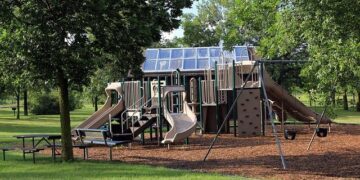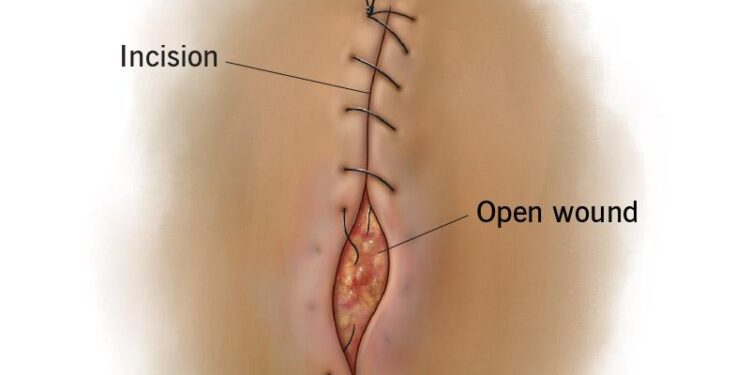In a significant stride toward enhancing the conservation of sagebrush ecosystems, the latest special issue of Rangeland Ecology and Management highlights groundbreaking research and findings from the United States Geological Survey (USGS). This issue, dedicated to the Sagebrush Conservation Design, showcases a collection of scientific articles that aim to inform and elevate conservation strategies pivotal for sustaining this vital habitat. The sagebrush landscape, spanning millions of acres across the western United States, not only supports a diverse array of wildlife but also plays a crucial role in the ecological health and cultural heritage of the region. With increasing pressures from development, climate change, and invasive species, the insights presented by USGS scientists are more timely and essential than ever. This article delves into the key contributions of the special issue and their implications for future sagebrush conservation efforts.
USGS Science Shapes Sagebrush Conservation Strategies
In a groundbreaking effort to shepherd the future of sagebrush ecosystems, the latest special issue of Rangeland Ecology and Management shines a spotlight on the pivotal role played by U.S. Geological Survey (USGS) science in shaping innovative conservation strategies. This compilation of research underscores the dynamic interplay between sagebrush landscapes and the species that inhabit them. Highlighted studies indicate that adaptive management plans informed by scientific data can significantly enhance habitat resilience, ultimately benefiting a host of wildlife, including the imperiled Greater Sage-Grouse. The contributions from USGS scientists provide critical insights into ecological processes, thereby informing policy decisions and conservation priorities across the western United States.
The special issue encompasses an array of interdisciplinary research, showcasing the importance of community involvement and stakeholder partnerships in the conservation arena. Key findings reveal that integrating climate change projections and land-use patterns into sagebrush habitat assessments can facilitate proactive conservation measures. The featured articles emphasize the following strategies to bolster sagebrush conservation:
- Monitoring and Assessment: Utilizing advanced remote sensing technologies for continuous habitat evaluation.
- Collaborative Conservation Planning: Engaging local communities and stakeholders in decision-making processes.
- Adaptive Management Practices: Implementing flexible strategies to respond to ecological changes.
| Research Focus | Key Outcome |
|---|---|
| Climate Impact Studies | Identified potential shifts in sagebrush distribution. |
| Wildlife Habitat Assessments | Mapped critical habitats for at-risk species. |
| Restoration Techniques | Documented successful interventions in degraded areas. |
Innovative Research Paves the Way for Rangeland Management Solutions
Recent studies showcased in the latest Special Issue of Rangeland Ecology and Management illuminate innovative methodologies developed by the U.S. Geological Survey (USGS) that aim to advance rangeland management. The research highlights the integration of cutting-edge technological tools and ecological data, which together form a robust framework for the effective conservation of sagebrush ecosystems. Key findings from the research include:
- Adaptive Management Strategies: Tools that allow for real-time adjustments based on environmental monitoring.
- Species Distribution Models: Enhanced models that predict the impact of climate change on rangeland biodiversity.
- Community Engagement: Initiatives that involve local stakeholders in conservation efforts, fostering a collaborative approach.
The culmination of these findings suggests a paradigm shift in how rangeland managers can approach conservation. For instance, a detailed analysis presented in the issue compares traditional management practices against innovative, data-driven methods. This research not only reveals significant improvements in ecosystem health but also promotes sustainability in land-use practices. Explore the comparison in the table below:
| Traditional Practices | Innovative Practices |
|---|---|
| Static resource allocation | Dynamic, demand-based allocation |
| Limited stakeholder involvement | Collaborative decision-making processes |
| Short-term monitoring | Ongoing, real-time data collection |
Key Recommendations for Enhancing Sagebrush Ecosystem Resilience
To bolster the resilience of sagebrush ecosystems, a multi-faceted approach is essential. First and foremost, implementing adaptive land management practices can significantly enhance ecosystem stability. This includes promoting native species restoration, which not only supports biodiversity but also strengthens the overall health of the sagebrush biome. Additionally, reducing the impact of invasive species through targeted control measures is critical. This combined strategy fosters a robust recovery of the sagebrush landscape, ensuring it can withstand various environmental stressors.
Collaboration among stakeholders plays a vital role in the conservation design. Integrating local knowledge with scientific research can lead to more effective resource management strategies. Furthermore, increased funding for conservation projects and the establishment of designated protected areas can safeguard critical habitats. Local communities and landowners must be engaged through education and training programs that emphasize sustainable practices. The table below outlines specific recommendations for enhancing sagebrush ecosystem resilience:
| Recommendation | Action |
|---|---|
| Native Species Restoration | Prioritize planting and promoting native flora. |
| Invasive Species Control | Implement timely and effective management strategies. |
| Stakeholder Collaboration | Facilitate partnerships between conservation groups and local communities. |
| Funding for Conservation | Secure financial support for ongoing conservation initiatives. |
| Education and Training | Develop programs to inform community members about sustainable practices. |
Closing Remarks
the special issue of Rangeland Ecology and Management stands as a pivotal contribution to the ongoing efforts in sagebrush conservation, showcasing the critical role of USGS science in shaping and supporting effective management strategies. This compilation not only highlights innovative research and data-driven approaches but also underscores the collaborative spirit among scientists, land managers, and conservationists dedicated to the sustainability of sagebrush ecosystems. As we face the challenges posed by climate change and habitat loss, the insights gathered in this issue will be invaluable as stakeholders work together to ensure the long-term health and resilience of these vital landscapes. Through continued research and collective action, we can help preserve the ecological integrity of sagebrush habitats for generations to come.































